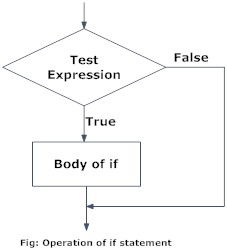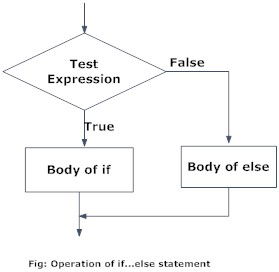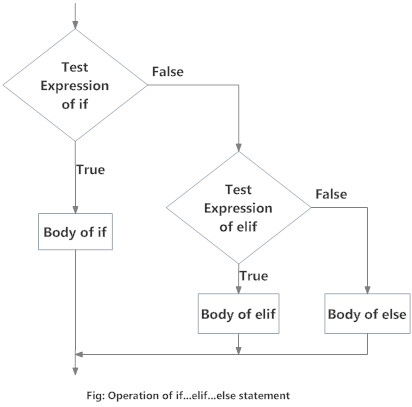Python Flow Control : If...else statement
What are if...else statement in Python?
Decision making is required when we want to execute a code only if a certain condition is satisfied.
The
if…elif…else statement is used in Python for decision making.Python if Statement Syntax
if test expression:
statement(s)
Here, the program evaluates the
test expression and will execute statement(s) only if the text expression is True.
If the text expression is
False, the statement(s) is not executed.
In Python, the body of the
if statement is indicated by the indentation. Body starts with an indentation and the first unindented line marks the end.
Python interprets non-zero values as
True. None and 0 are interpreted as False.Python if Statement Flowchart

Example: Python if Statement
When you run the program, the output will be:
3 is a positive number
This is always printed
This is also always printed.
In the above example,
num > 0 is the test expression.
The body of
if is executed only if this evaluates to True.
When variable num is equal to 3, test expression is true and body inside body of
if is executed.
If variable num is equal to -1, test expression is false and body inside body of
if is skipped.
The
print() statement falls outside of the if block (unindented). Hence, it is executed regardless of the test expression.Python if...else Statement
Syntax of if...else
if test expression:
Body of if
else:
Body of else
The
if..else statement evaluates test expression and will execute body of if only when test condition is True.
If the condition is
False, body of else is executed. Indentation is used to separate the blocks.Python if..else Flowchart

Example of if...else
In the above example, when num is equal to 3, the test expression is true and body of if is executed and body of else is skipped.
If num is equal to -5, the test expression is false and body of else is executed and body of if is skipped.
If num is equal to 0, the test expression is true and body of if is executed and body of else is skipped.
if is executed and body of else is skipped.else is executed and body of if is skipped.if is executed and body of else is skipped.Python if...elif...else Statement
Syntax of if...elif...else
if test expression:
Body of if
elif test expression:
Body of elif
else:
Body of else
The
elif is short for else if. It allows us to check for multiple expressions.
If the condition for
if is False, it checks the condition of the next elif block and so on.
If all the conditions are
False, body of else is executed.
Only one block among the several
if...elif...else blocks is executed according to the condition.
The
if block can have only one else block. But it can have multiple elif blocks.Flowchart of if...elif...else

Example of if...elif...else
When variable num is positive, Positive number is printed.
If num is equal to 0, Zero is printed.
If num is negative, Negative number is printed.
Python Nested if statements
We can have a if...elif...else statement inside another if...elif...else statement. This is called nesting in computer programming.
Any number of these statements can be nested inside one another. Indentation is the only way to figure out the level of nesting. This can get confusing, so must be avoided if we can.
if...elif...else statement inside another if...elif...else statement. This is called nesting in computer programming.Python Nested if Example
# In this program, we input a number
# check if the number is positive or
# negative or zero and display
# an appropriate message
# This time we use nested if
num = float(input("Enter a number: "))
if num >= 0:
if num == 0:
print("Zero")
else:
print("Positive number")
else:
print("Negative number")
Output 1
Enter a number: 5
Positive number
Output 2
Enter a number: -1
Negative number
Output 3
Enter a number: 0
Zero
# In this program, we input a number
# check if the number is positive or
# negative or zero and display
# an appropriate message
# This time we use nested if
num = float(input("Enter a number: "))
if num >= 0:
if num == 0:
print("Zero")
else:
print("Positive number")
else:
print("Negative number")






Comments
Post a Comment